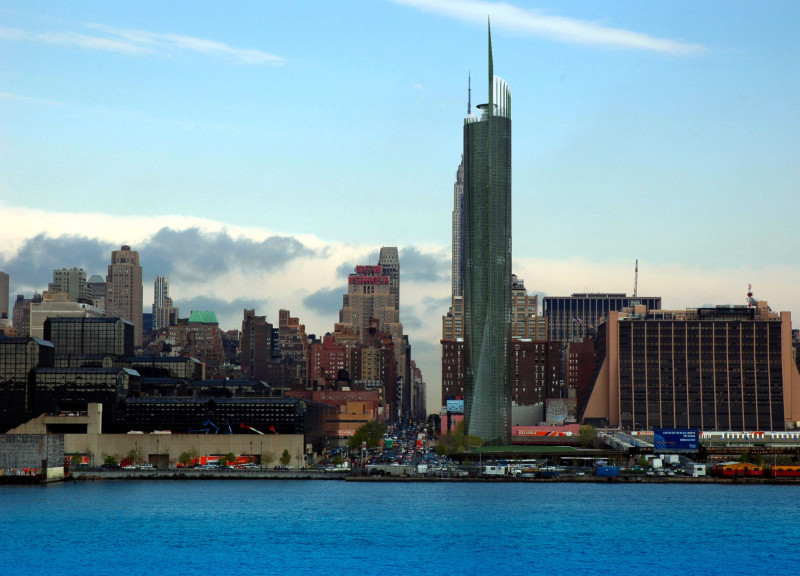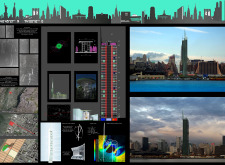5 key facts about this project
The design presents a clear merging of geometric shapes and advanced energy solutions. It is situated in a prominent urban setting, where the relationship between the building and its environment is carefully considered. The overall concept emphasizes sustainability while focusing on functionality and aesthetic appeal. Circular forms serve as the foundation for the structure, creating a unique architectural presence.
Design Concept and Geometry
The design is based on the manipulation of circular shapes. A circle is divided and translated by half until an edge aligns with its center. This straightforward geometric approach results in a balanced and appealing structure. The clear shapes enhance the visual impact, making the design both practical and engaging.
Contextual Integration
The project provides a view of Manhattan from 17 kilometers away. It aligns with the Empire State Building, visible from a distance of 1.7 kilometers. This connection highlights how the building interacts with its surroundings. It fits within the city's established skyline while maintaining its distinct identity. The design acknowledges its context, ensuring relevance in the urban landscape.
Sustainable Energy Solutions
Vertical axis turbines are a prominent feature of the design, which emphasizes energy efficiency. These turbines can generate 50% more energy than standard horizontal turbines and can operate at low wind speeds. This focus on renewable energy reflects a commitment to sustainable practices, allowing the building to contribute positively to the environment.
Aerodynamic Performance Analysis
Computerized simulations of wind flow demonstrate how the design considers airflow around the structure. By studying aspects like the airflow inlet, the project optimizes the performance of the vertical turbines. This emphasis on analysis enhances energy generation and responds effectively to environmental challenges.
The design shows a clear connection between geometry and engineering, resulting in a structure that effectively meets its functional requirements. Each element contributes to a coherent architectural statement within its urban setting.



















































